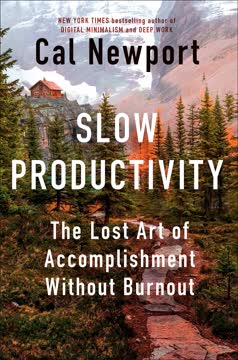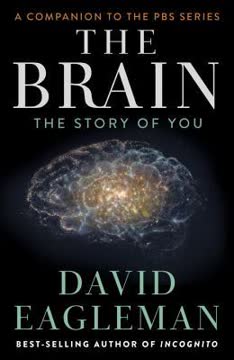मुख्य निष्कर्ष
1. हमारा मस्तिष्क आदतें बनाने के लिए स्वाभाविक रूप से तैयार होता है, जिससे व्यवहार में बदलाव करना कठिन होता है
मस्तिष्क एक आदत मशीन है, जो किसी भी नियमित व्यवहार को स्वचालित करने का प्रयास करता है ताकि हमें हर कदम सोचने में समय न गंवाना पड़े।
विकासात्मक लाभ: आदतें हमारे मस्तिष्क को नियमित कार्यों को स्वचालित करने की अनुमति देती हैं, जिससे जटिल कार्यों के लिए मानसिक संसाधन मुक्त हो जाते हैं। हमारे पूर्वजों के वातावरण में यह दक्षता जीवित रहने के लिए अत्यंत महत्वपूर्ण थी।
तंत्रिका विज्ञान की भूमिका: बेसल गैंग्लिया, विशेषकर स्ट्रायटम, आदत निर्माण में केंद्रीय भूमिका निभाते हैं। जैसे-जैसे व्यवहार आदत बनते हैं, वे प्रीफ्रंटल कॉर्टेक्स के लक्ष्य-निर्देशित नियंत्रण से मोटर क्षेत्रों के स्वचालित नियंत्रण में स्थानांतरित हो जाते हैं।
व्यवहार परिवर्तन की चुनौतियाँ:
- आदतें गहरे निहित तंत्रिका मार्ग हैं
- स्वचालित व्यवहार बिना सचेत सोच के होते हैं
- आदतें बदलने के लिए इन कुशल तंत्रिका सर्किट्स को ओवरराइड करना पड़ता है
- मस्तिष्क स्थिरता बनाए रखने के लिए बदलाव का विरोध करता है
2. डोपामाइन आदत निर्माण और लत में महत्वपूर्ण भूमिका निभाता है
डोपामाइन आदतों के विकास के लिए मूलभूत माना जाता है, चाहे वे अच्छी हों या बुरी।
डोपामाइन की बहुआयामी भूमिका:
- पुरस्कार की भविष्यवाणी में त्रुटि का संकेत देता है
- सिनैप्टिक प्लास्टिसिटी को नियंत्रित करता है
- प्रेरणा और "चाहत" को बढ़ावा देता है
- पुरस्कार से जुड़े संकेतों पर ध्यान केंद्रित करता है
डोपामाइन और आदत निर्माण:
- अप्रत्याशित पुरस्कारों से जुड़े व्यवहारों को मजबूत करता है
- "तीन-कारक नियम" के माध्यम से तंत्रिका संबंधों को सुदृढ़ करता है
- लक्ष्य-निर्देशित से आदत-आधारित व्यवहार में संक्रमण को प्रेरित करता है
लत में डोपामाइन:
- नशे की दवाएं असामान्य रूप से अधिक या लंबी अवधि तक डोपामाइन रिलीज़ करती हैं
- इससे पुरस्कार प्रणाली की अतिसंवेदनशीलता होती है
- दवा संकेतों को पुरस्कार से जोड़ने वाली शक्तिशाली स्मृतियाँ बनती हैं
3. आदतें समय के साथ स्वचालित और लक्ष्यों से अलग हो जाती हैं
समय के साथ व्यवहार प्रारंभ में संज्ञानात्मक कार्यों में लगे कॉर्टिकोस्ट्रायटल लूप्स से मोटर कार्यों में लगे लूप्स में स्थानांतरित हो जाता है, जिससे यह संज्ञानात्मक प्रणाली के प्रत्यक्ष नियंत्रण से बाहर हो जाता है।
आदत की स्वचालितता:
- शुरू में व्यवहार के लिए सचेत प्रयास और ध्यान आवश्यक होता है
- पुनरावृत्ति से वे स्वचालित होते जाते हैं
- अंततः आदतें बिना जागरूकता के सक्रिय और निष्पादित हो सकती हैं
चंकिंग: जटिल क्रियाओं के अनुक्रम को एक इकाई में समेकित कर दिया जाता है, जिससे वे अधिक कुशल लेकिन बाधित करने में कठिन हो जाते हैं।
लक्ष्यों से अलगाव:
- आदतें तब भी बनी रहती हैं जब मूल लक्ष्य अप्रासंगिक हो जाता है
- यही कारण है कि आदतें तोड़ना इतना कठिन होता है
- मूल्यह्रास अध्ययन दिखाते हैं कि पुरस्कार न मिलने पर भी आदतें जारी रहती हैं
4. हमारे मस्तिष्क की कई प्रणालियाँ हमारे व्यवहार को नियंत्रित करने के लिए प्रतिस्पर्धा करती हैं
जब मैं कहता हूँ कि "मैं" ने निर्णय लिया, तो यह तथ्य छुपा देता है कि मेरे मस्तिष्क में कई प्रणालियाँ एक साथ—या कभी-कभी एक-दूसरे के विरुद्ध—मेरे कार्यों को निर्धारित करने के लिए काम कर रही हैं।
प्रतिस्पर्धी प्रणालियाँ:
- आदत प्रणाली (मॉडल-फ्री रिइन्फोर्समेंट लर्निंग)
- लक्ष्य-निर्देशित प्रणाली (मॉडल-बेस्ड रिइन्फोर्समेंट लर्निंग)
- पावलोवियन प्रणाली (प्राकृतिक प्रतिक्रियाएँ)
गतिशील अंतःक्रिया:
- ये प्रणालियाँ समानांतर काम करती हैं
- प्रमुख प्रणाली अनुभव, तनाव और संज्ञानात्मक भार जैसे कारकों पर निर्भर करती है
- व्यवहार अक्सर इन प्रणालियों के बीच प्रतिस्पर्धा का परिणाम होता है
व्यवहार परिवर्तन के लिए निहितार्थ:
- केवल एक प्रणाली को लक्षित करना पर्याप्त नहीं हो सकता
- प्रभावी हस्तक्षेपों को कई प्रणालियों को संबोधित करना चाहिए
- प्रणालियों के बीच संतुलन को समझना व्यक्तिगत दृष्टिकोणों को बेहतर बना सकता है
5. आत्म-नियंत्रण प्रीफ्रंटल कॉर्टेक्स पर निर्भर करता है, जो अस्थिर हो सकता है
प्रीफ्रंटल कॉर्टेक्स अस्थिर हो जाता है और हमारी सोचने व योजना बनाने की क्षमता प्रभावित हो जाती है।
प्रीफ्रंटल कॉर्टेक्स के कार्य:
- कार्यशील स्मृति
- अवरोधात्मक नियंत्रण
- लक्ष्य बनाए रखना
- योजना और निर्णय लेना
कमजोरियाँ:
- तनाव प्रीफ्रंटल कार्य को प्रभावित करता है
- नींद की कमी संज्ञानात्मक नियंत्रण को कम करती है
- एक साथ कई कार्य करने से प्रभावशीलता घटती है
व्यवहार परिवर्तन के लिए निहितार्थ:
- केवल इच्छाशक्ति पर निर्भर रहना अक्सर असफल होता है
- संज्ञानात्मक भार कम करने वाली रणनीतियाँ अधिक सफल हो सकती हैं
- सहायक वातावरण बनाना प्रीफ्रंटल कमजोरियों की भरपाई कर सकता है
6. लत मस्तिष्क की पुरस्कार और आदत प्रणालियों का अपहरण कर लेती है
लत एक ऐसी स्थिति है जिसमें व्यक्ति हानिकारक परिणामों के बावजूद किसी व्यवहार में अनियंत्रित और जबरदस्त रूप से लिप्त रहता है।
लत में तंत्रिका जैविक परिवर्तन:
- दवा-संबंधित संकेतों के प्रति संवेदनशीलता बढ़ना
- प्राकृतिक पुरस्कारों के प्रति संवेदनशीलता कम होना
- प्रीफ्रंटल कॉर्टेक्स का कार्य प्रभावित होना
- आदत सर्किट्स का मजबूत होना
लत की प्रगति:
- प्रारंभिक दवा उपयोग पुरस्कार से प्रेरित
- आदत आधारित उपयोग में संक्रमण
- नकारात्मक परिणामों के बावजूद जबरदस्त उपयोग
लत के उपचार में चुनौतियाँ:
- मस्तिष्क कार्य में स्थायी परिवर्तन
- मजबूत एसोसिएटिव स्मृतियाँ जो मिटाना कठिन होती हैं
- कई मस्तिष्क प्रणालियों की भागीदारी
7. प्रभावी व्यवहार परिवर्तन के लिए पर्यावरणीय और संज्ञानात्मक रणनीतियाँ आवश्यक हैं
व्यवहार परिवर्तन की सफलता को अधिकतम करने के लिए, व्यक्ति को अपने पर्यावरण को ध्यान से देखना चाहिए ताकि वे उन परिस्थितियों को समझ सकें जो अवांछित व्यवहार को प्रेरित करती हैं।
पर्यावरणीय रणनीतियाँ:
- आदत के ट्रिगर्स की पहचान और उन्हें हटाना
- अवांछित व्यवहारों के लिए "घर्षण" पैदा करना
- पर्यावरण को इच्छित व्यवहारों के समर्थन में डिजाइन करना
संज्ञानात्मक रणनीतियाँ:
- विशिष्ट क्रियान्वयन इरादे विकसित करना
- प्रतिबद्धता उपकरणों का उपयोग
- माइंडफुलनेस और आत्म-निरीक्षण का अभ्यास
संयुक्त दृष्टिकोण:
- स्वचालित (आदत) और नियंत्रित (लक्ष्य-निर्देशित) प्रक्रियाओं दोनों को संबोधित करना
- रणनीतियों को व्यक्तिगत आवश्यकताओं और परिस्थितियों के अनुसार अनुकूलित करना
- स्थायी परिवर्तन के लिए अक्सर कई हस्तक्षेपों की आवश्यकता होती है
8. तंत्रिका विज्ञान लक्षित व्यवहार परिवर्तन हस्तक्षेपों के लिए आशाजनक रास्ते प्रदान करता है
यदि हम व्यवहार परिवर्तन के लिए अब तक के बिखरे हुए प्रयासों से आगे बढ़ना चाहते हैं, तो हमें उन मस्तिष्क तंत्रों को बेहतर समझना होगा जो व्यवहार परिवर्तन के पीछे हैं, ताकि हम उन्हें सीधे लक्षित कर सकें।
उभरते हुए तंत्रिका विज्ञान आधारित हस्तक्षेप:
- हानिकारक स्मृतियों को कमजोर करने के लिए पुनःसंकलन-आधारित उपचार
- विशिष्ट तंत्रिका सर्किट्स को नियंत्रित करने के लिए ऑप्टोजेनेटिक उत्तेजना
- संज्ञानात्मक नियंत्रण बढ़ाने के लिए औषधीय उपाय
व्यक्तिगत हस्तक्षेप:
- व्यक्तिगत तंत्रिका "बायोटाइप" पहचानने के लिए मस्तिष्क इमेजिंग
- उपचार प्रतिक्रिया की भविष्यवाणी के लिए आनुवंशिक परीक्षण
- व्यक्तिगत उपचार योजनाओं को अनुकूलित करने के लिए N-of-1 परीक्षण
नैतिक विचार:
- सीधे मस्तिष्क नियंत्रण के संभावित जोखिम
- प्रभावशीलता और सुरक्षा के बीच संतुलन
- उन्नत उपचारों तक समान पहुंच सुनिश्चित करना
अंतिम अपडेट:
FAQ
What is Hard to Break: Why Our Brains Make Habits Stick by Russell A. Poldrack about?
- Explores habit formation: The book investigates why habits form in our brains, why they are so persistent, and how they shape our behavior, often outside conscious awareness.
- Neuroscience and psychology focus: It delves into the brain mechanisms—especially the roles of the basal ganglia and dopamine—that underlie habit formation and maintenance.
- Covers addiction and change: The book also examines addiction as an extreme form of habit and discusses the science behind behavior change and self-control.
- Interdisciplinary approach: Poldrack combines insights from neuroscience, psychology, and computational modeling to provide a comprehensive understanding of habits.
Why should I read Hard to Break by Russell A. Poldrack?
- Deep scientific insight: The book offers a nuanced, research-based explanation of habits, moving beyond simplistic advice and common misconceptions.
- Practical relevance: Understanding the brain’s habit mechanisms can help readers develop more effective strategies for personal and societal behavior change.
- Broad applicability: Topics range from everyday routines to addiction and digital habits, making it relevant for anyone interested in psychology, neuroscience, or self-improvement.
- Actionable knowledge: Readers gain practical advice on behavior change, including the limitations of willpower and the importance of environment and planning.
What are the key takeaways from Hard to Break by Russell A. Poldrack?
- Habits are brain-based: Habits are deeply rooted in specific brain circuits, making them persistent and difficult to change.
- Self-control is not enough: Willpower alone is often insufficient for lasting behavior change; environmental design and habit management are crucial.
- Addiction as maladaptive habit: Addiction is explained as a hijacking of the brain’s habit systems, with unique challenges for change.
- Future of behavior change: Emerging neuroscience tools and personalized interventions may offer new hope for breaking stubborn habits.
How does Hard to Break by Russell A. Poldrack define a habit?
- Automaticity is central: A habit is an action or thought triggered automatically by a specific cue, performed without conscious intention.
- Detached from goals: Habits persist even when the original reward or motivation is gone, operating independently of current goals.
- Spans actions and thoughts: Habits include not just physical routines but also mental patterns and emotional responses.
- Chunked behavior: Habits often become sequences of actions that run to completion once triggered, making them hard to interrupt.
What are the main brain mechanisms behind habit formation in Hard to Break by Russell A. Poldrack?
- Basal ganglia’s central role: The basal ganglia encode and maintain habits, processing both motor and cognitive routines.
- Dopamine’s modulatory effect: Dopamine signals reward prediction errors, reinforcing actions that lead to rewards and driving habit formation.
- Transition from conscious to automatic: Behaviors start as goal-directed and shift to automatic control by the basal ganglia with repetition.
- Cue-driven activation: Environmental cues become powerful triggers for habitual actions through learned associations.
Why are habits so persistent and hard to break according to Hard to Break by Russell A. Poldrack?
- Original learning persists: Old habits are inhibited, not erased, making them prone to resurface when new behaviors aren’t reinforced.
- Chunking and automaticity: Habits become chunked sequences, making them difficult to interrupt once started.
- Powerful environmental triggers: Cues associated with habits gain increased salience, capturing attention and triggering responses even without current rewards.
- Brain mechanisms protect habits: Multiple neural systems reinforce and maintain habits, making simple solutions ineffective.
How does Hard to Break by Russell A. Poldrack explain the relationship between habits and goals?
- Goal-directed vs. habitual: Early learning is goal-directed, but with repetition, actions become habitual and less sensitive to current goals.
- Competing brain systems: The brain’s goal-directed (prefrontal cortex, hippocampus) and habit (basal ganglia) systems compete for behavioral control.
- Model-based vs. model-free: Habits reflect model-free learning (cached values), while goal-directed actions use model-based planning and cognitive maps.
- Persistence despite changing goals: Habits can persist even when the desired outcome is no longer relevant.
What does Hard to Break by Russell A. Poldrack say about self-control and willpower in behavior change?
- Prefrontal cortex’s role: Self-control depends on the prefrontal cortex, which supports planning, working memory, and impulse inhibition.
- Willpower is limited: The book challenges the idea that willpower alone drives change, showing that self-control is not strongly linked to basic inhibitory control.
- Avoiding temptation: People with better self-control tend to avoid situations requiring effortful inhibition, reducing reliance on willpower.
- Habits support self-control: Good self-control is linked to forming beneficial habits, automating desired behaviors and making change more sustainable.
How does Hard to Break by Russell A. Poldrack describe the role of dopamine in habits and motivation?
- Signals prediction errors: Dopamine neurons fire in response to unexpected rewards or cues, encoding reward prediction errors that drive learning.
- Motivation over pleasure: Dopamine is more about “wanting” (motivation) than “liking” (pleasure), which involves other neurotransmitters.
- Pathway-specific effects: Dopamine acts differently on direct and indirect pathways in the basal ganglia, influencing action facilitation or inhibition.
- Central to addiction: Drugs hijack dopamine systems, reinforcing maladaptive habits and compulsive behaviors.
What is the connection between habits and addiction in Hard to Break by Russell A. Poldrack?
- Addiction as maladaptive habit: Addiction is framed as the hijacking of the brain’s habit machinery by drugs that cause excessive dopamine release.
- From impulse to compulsion: Drug use often shifts from impulsive, goal-directed behavior to habitual, compulsive seeking resistant to negative consequences.
- Brain and stress changes: Addiction involves changes in stress systems and brain plasticity, contributing to withdrawal and relapse.
- Individual vulnerability: Genetic and environmental factors influence susceptibility to addiction through differences in habit formation and self-control systems.
What strategies for changing habits and behavior does Hard to Break by Russell A. Poldrack recommend?
- Environmental design: Altering cues and contexts can reduce habit triggers and support new behaviors.
- Implementation intentions: Forming specific if-then plans helps bridge the gap between intention and action, preparing for tempting situations.
- Monitoring and commitment: Self-monitoring and using commitment devices (like monetary pledges) increase accountability and support sustained change.
- Limitations of nudges: While nudges and environmental tweaks help, they may not produce lasting effects without deeper habit change.
What does Hard to Break by Russell A. Poldrack say about the future of behavior change science and emerging neuroscience tools?
- Brain stimulation potential: Techniques like transcranial magnetic stimulation (TMS) and optogenetics show promise for modulating self-control and habit circuits, though more research is needed.
- Memory erasure research: Experimental approaches targeting memory reconsolidation or molecular mechanisms may one day weaken or erase maladaptive habits.
- Precision interventions: Combining brain imaging, genetics, and behavioral data could enable personalized, mechanism-focused interventions for behavior change.
- Open science emphasis: The book advocates for transparency, large sample sizes, and preregistration to improve the reliability of behavior change research.
समीक्षाएं
हार्ड टू ब्रेक आदतों और व्यवहार परिवर्तन पर एक वैज्ञानिक दृष्टिकोण प्रस्तुत करता है, जो तंत्रिका विज्ञान और मनोविज्ञान के शोध पर आधारित है। पाठक इसकी सटीक और कठोर पद्धति की सराहना करते हैं, साथ ही इसमें की गई साहसिक दावों के प्रति संदेह भी देखते हैं। हालांकि, कुछ लोगों को यह सामान्य पाठकों के लिए बहुत जटिल और तकनीकी लगता है, क्योंकि इसमें व्यावहारिक सुझावों की कमी है। यह पुस्तक वर्तमान ज्ञान का व्यापक परिचय देने के लिए प्रशंसित है, लेकिन इसे अत्यधिक शैक्षणिक होने के कारण आलोचना भी मिली है। जानकारीपूर्ण होते हुए भी, यह आदतों में बदलाव के लिए ठोस समाधान प्रदान नहीं करती, जिससे कुछ पाठक अधिक क्रियात्मक मार्गदर्शन की अपेक्षा करते हैं।
Similar Books















